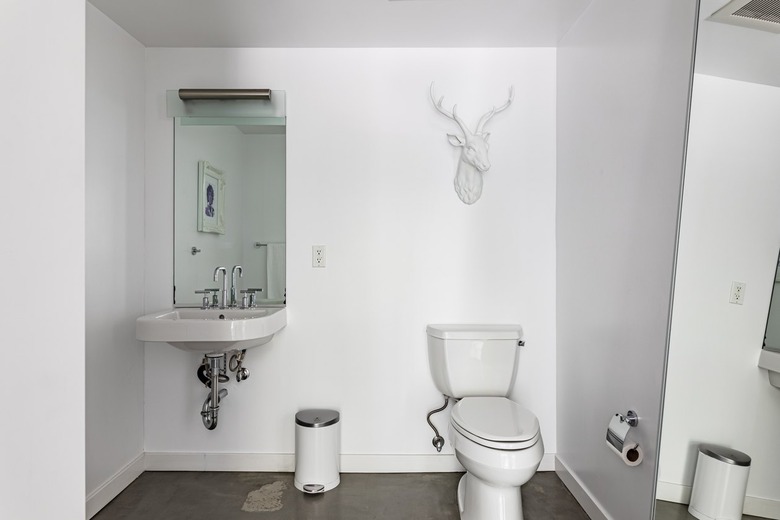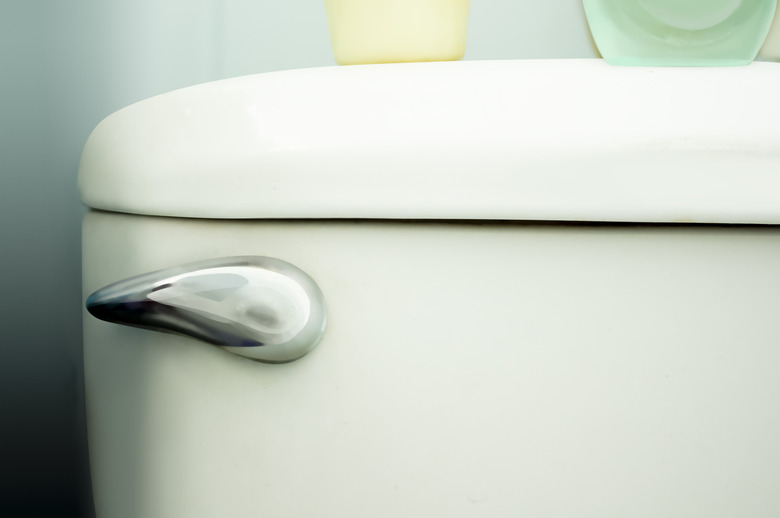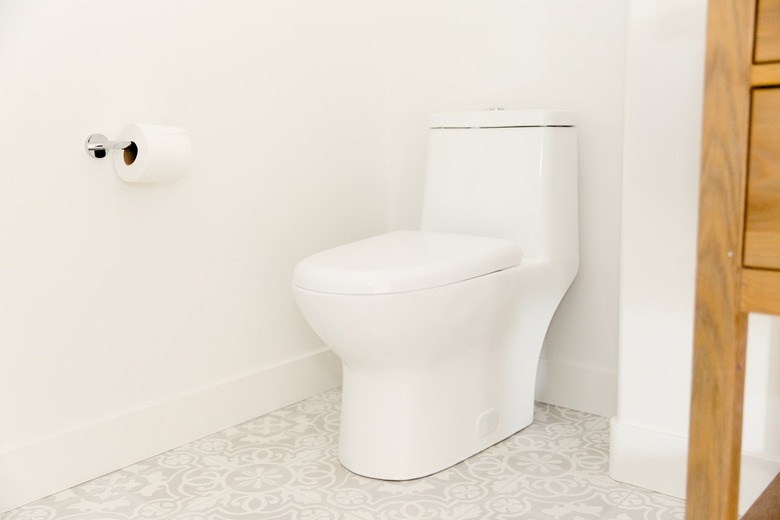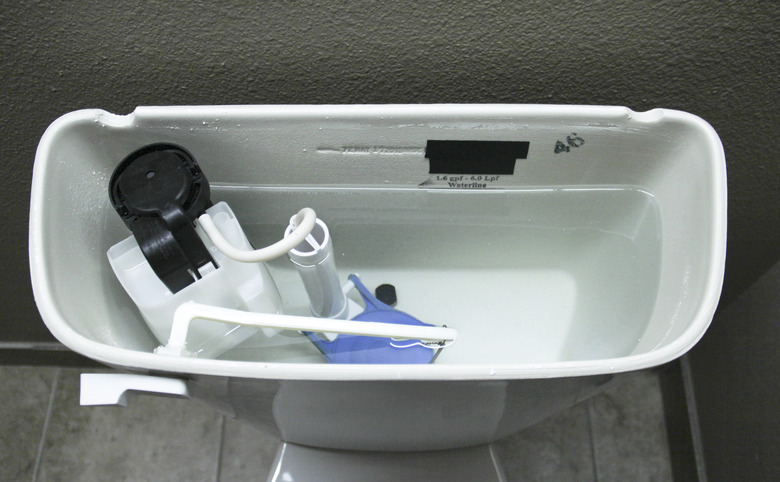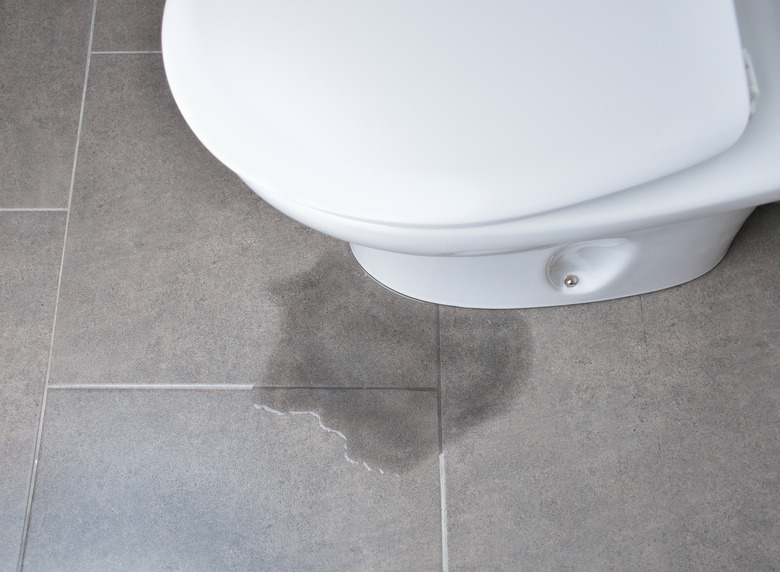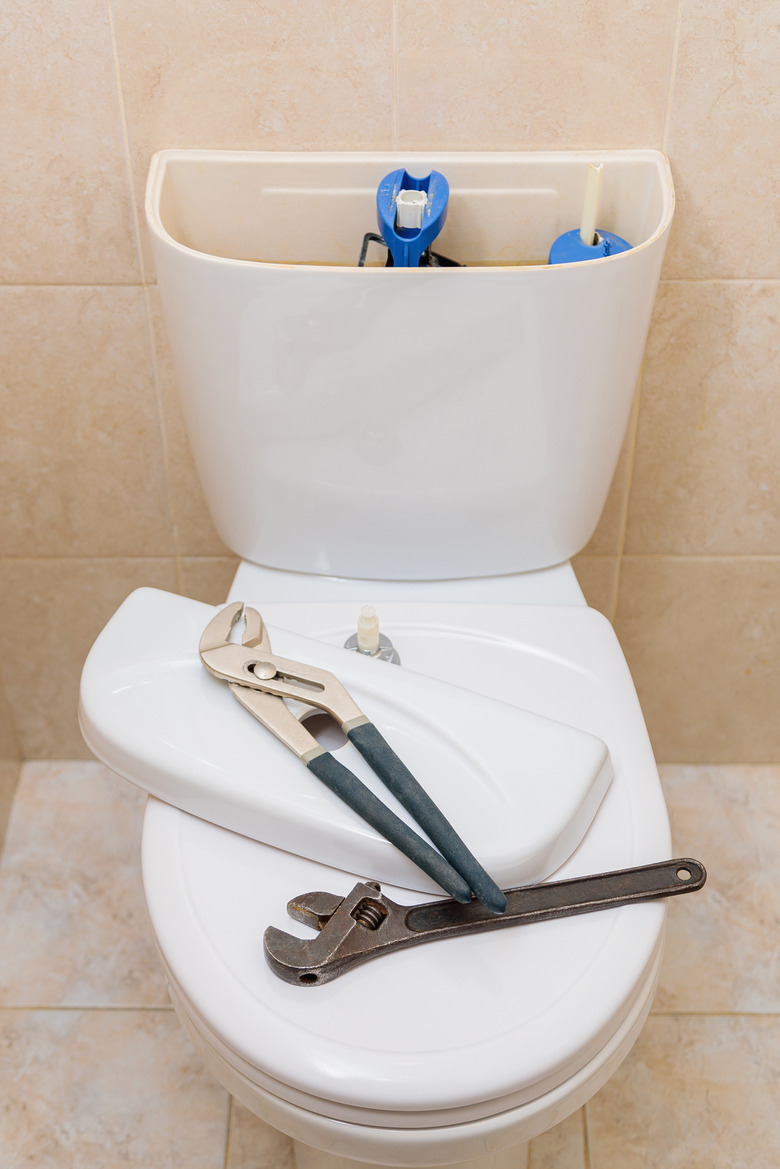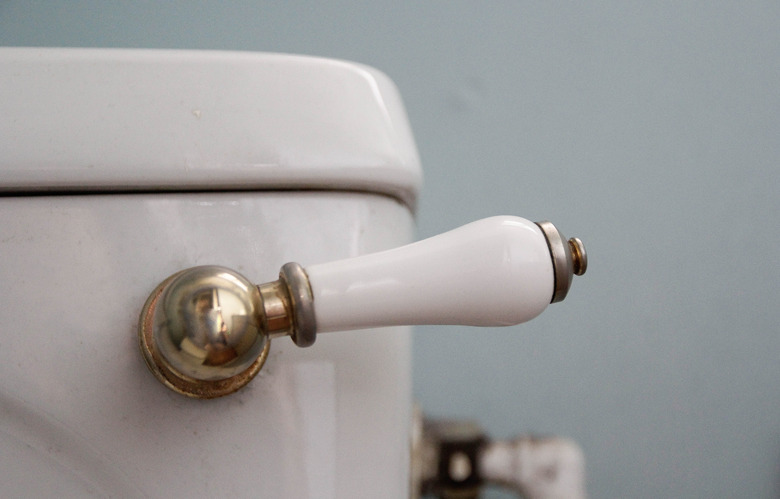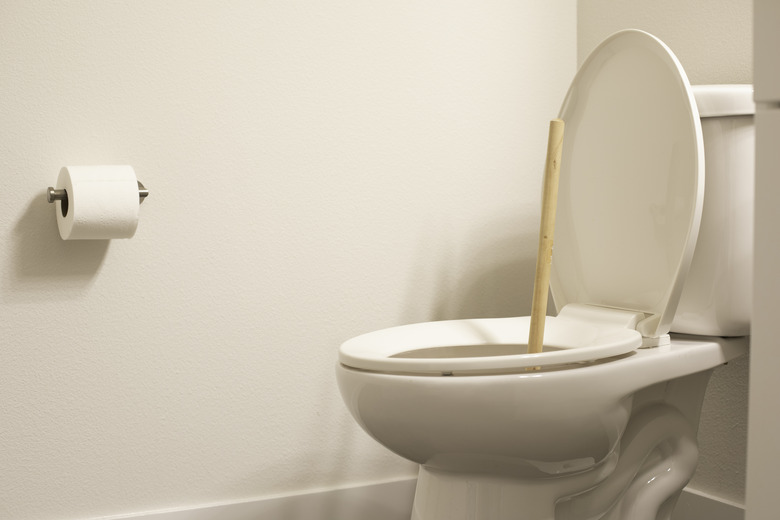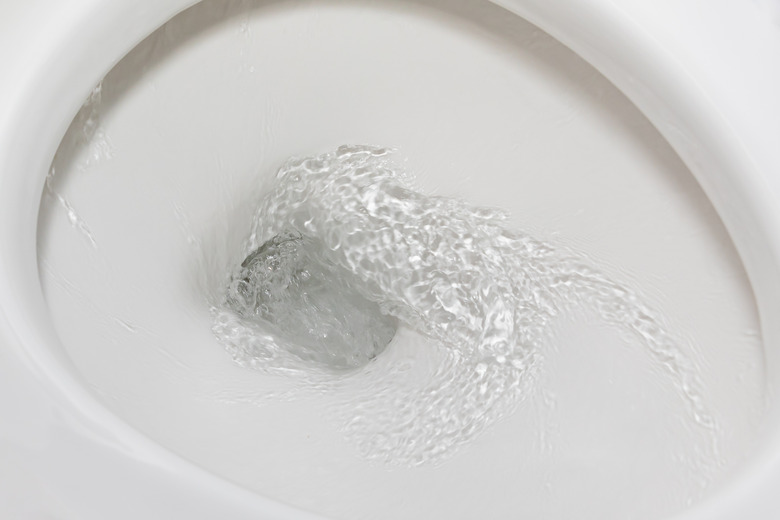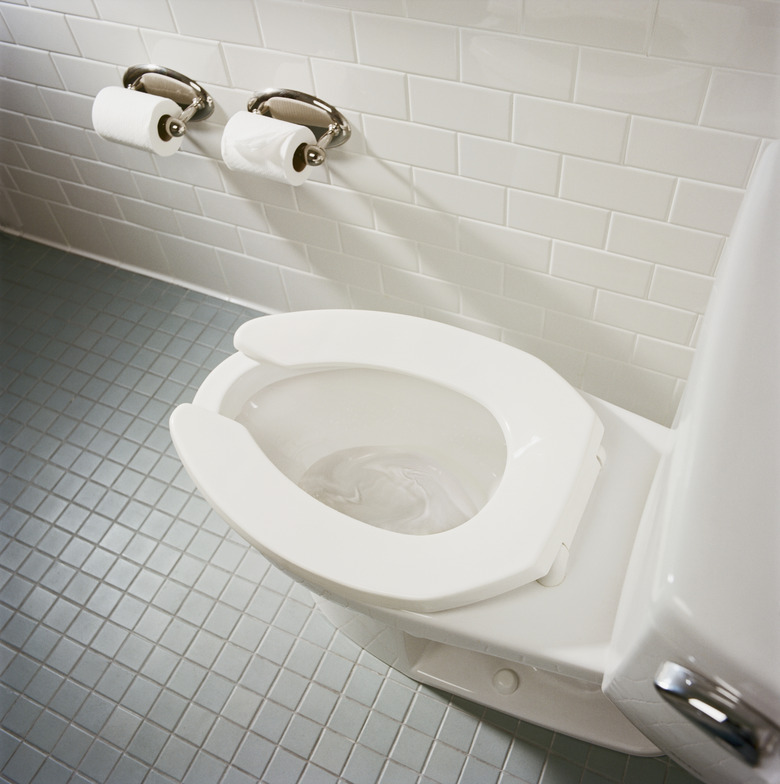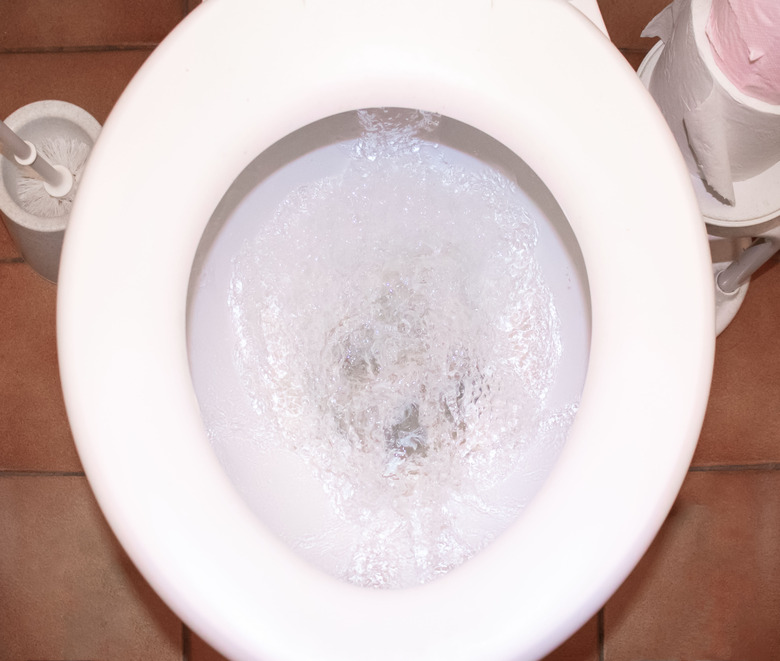10 Easy DIY Fixes For Common Toilet Problems
We may receive a commission on purchases made from links.
Your toilet is likely the busiest seat in the house, which means it may occasionally some repairs to keep it running well. While plumbing problems are generally best left to a licensed plumber, many common toilet problems are simple enough for homeowners to fix themselves. A broken toilet is a major inconvenience, so fixing the issues yourself can get it running again quickly without waiting for a plumber. For most toilet repairs, it's necessary to shut off the water supply while you're working; fortunately, there's an easy to use shutoff valve just below the toilet tank.
1. Broken Flush Handle
1. Broken Flush Handle
All those flushes can take a toll on the flush handle, causing it to become loose, get stuck, or break. A loose or stuck handle can happen if the nut inside the toilet that holds it in place isn't adjusted properly. Loose handles can also occur if the lift chain has too much slack or is no longer attached. Sometimes, the handle breaks due to rough treatment or deterioration due to age.
The DIY Fix
Determine if you can fix your existing handle before making a trip to the home improvement store. Lift the tank lid to see what's happening inside. Loosening or tightening the nut for the handle with an adjustable wrench might fix the issue. Note that toilet handle nuts are reverse-threaded, so instead of righty-tighty, lefty-loosey, you turn the nut counterclockwise to tighten it. Most nuts are plastic and can break, so be gentle with the wrench.
If the toilet handle is still loose, ensure the chain is connected properly. It should have about 1/2 inch of slack, so if it has more, adjust it to remove slack from the chain.
If these simple repairs don't work, buy a replacement flush handle and install it on your toilet. You'll need to loosen the nut on the old handle and remove it before inserting the arm for the new handle through the hole. Attach the mounting nut and lift chain to connect the new handle. Then, test your new flusher.
2. Loose or Rocking Toilet
2. Loose or Rocking Toilet
When a toilet is installed correctly, it attaches to the floor securely without wobbling, rocking, or shifting. If your toilet isn't securely anchored, it can damage the wax seal, which can lead to leaks and water damage. Rocking could be caused by a problem with the toilet flange, which connects the toilet to the drain pipe. As your house settles, the flange can become higher than the floor, which can cause rocking. Loose flange bolts can also cause rocking.
The DIY Fix
A simple fix for this issue is placing shims under the toilet to keep it from rocking but do this only if the toilet is not leaking. You might need to test out different shims and shim placement to get the right fit. Tighten the bolts that hold the toilet in place, being careful not to overtighten them, which can crack your toilet. Caulking around the toilet once it's securely in place can also help.
If you notice leaking along with rocking, you'll need to drain and remove the toilet to look for problems underneath. The flange and wax ring might need to be replaced (refer to #4).
3. Loose or Leaky Tank
3. Loose or Leaky Tank
Since the toilet tank is where the toilet stores the water, a leaky toilet tank can create a wet mess in your bathroom. Sometimes, the tank leaks water into the bowl, which doesn't cause water damage but can waste water. If you suspect this type of leak, add a few drops of food coloring into the tank and leave it for a while. The food coloring will make its way into your toilet bowl if this type of leak is happening.
A more damaging issue is the water leaking out of the tank and onto your bathroom floor. This often happens if there's an issue with the bolts and gaskets at the bottom of the tank where it attaches to the bowl. Without a good seal, the tank can leak.
The DIY Fix
If the tank is leaking into the toilet bowl, you likely need to install a new flapper. It's fairly easy to replace a toilet flapper if it's causing the issue. You need to disconnect the chain and remove the old flapper from the pegs that hold it in place. For the new flapper, do the opposite. Place it on the pegs and connect the chain. Try a few test flushes to ensure the new flapper is working properly.
If the tank is leaking onto the floor, inspect it for cracks. If you spot one, you'll need to replace the tank. Sometimes, you can replace just the tank, or you might choose to replace the entire toilet.
Tightening the bolts where the tank connects to the bowl might help. Overtightening the bolts can crack the tank, so adjust them carefully. If this doesn't help, you might need to replace the bolts and gaskets.
4. Leaky Toilet Base
4. Leaky Toilet Base
If you notice water on the floor around your toilet, see if you can spot where it's coming from. If it's not coming from the tank, it could be coming from the base of the toilet. This can happen if the wax ring is compromised, the toilet bowl is cracked, or the toilet isn't mounted correctly.
The DIY Fix
A cracked toilet needs to be replaced, but other issues are often fixable. Try tightening the bolts that hold the toilet to the floor if they seem loose. Dry the floor and wait to see if the leaking stops.
If the issue is the wax ring, you'll need to replace the wax ring to stop the leaking. This requires you to drain the toilet and completely remove it from the floor since the wax ring sits underneath the toilet. A replacement wax ring is inexpensive but be sure you buy the correct size of ring for your toilet. Alternatively, you can use a foam ring, which is far less messy, and it allows you to reposition the toilet if necessary. Wax rings give you only one chance when setting the toilet; if you have to move it for any reason, you have to use a new wax ring.
5. Constantly Running Water
5. Constantly Running Water
A constantly running toilet ranks up there with some of the most annoying sounds in your home and is one of the most common problems people have with a toilet. If you're tired of hearing the constantly running water, start by inspecting the flapper, which could be damaged or could have shifted so that it doesn't seal properly. The result is water running into the bowl.
Another possible source is an issue with the tank filling to the proper height. Your toilet tank has an overflow tube inside, and the tank water should stop about 1 inch below the top of that tube. If the float cup on the fill valve is adjusted incorrectly or gets stuck, it could cause the water level to be too high, resulting in water trickling constantly into the overflow tube. You might have the same issue if the fill valve assembly is damaged or needs to be replaced.
The DIY Fix
Replacing the flapper is an easy option if it looks like it's not sealing properly (refer to #3). If the issue is the water level, make sure the float isn't stuck. Adjust the float positioning (it may have an adjustment screw or a clip that slides on a rod). It can take some trial and error to get the ideal positioning for the float cup. If that doesn't help, replacing your fill valve is another possible solution.
6. Phantom Flushing Issue
6. Phantom Flushing Issue
A random flushing sound when no one has flushed the toilet is called phantom flushing, which can relate to the flapper or tank issues. The sound you hear is the tank refilling like it does when you flush the toilet. This can happen if the tank loses water, often due to a leak. If the flapper doesn't close securely, it can allow water to leak into the bowl, causing the toilet to refill the tank.
The DIY Fix
The most common fix for phantom flushing is the same as it is for constantly running water. Draining the tank and replacing the flapper (see #3 above) should stop those random flushes. If the leaking happens around the bolts in the tank, you might need to tighten them or replace the bolts and gaskets.
7. Toilet Bowl Clog
7. Toilet Bowl Clog
A common issue homeowners face is a clogged toilet, which can happen for many reasons. If you have little ones who are drawn to the toilet, the culprit could be a rubber ducky or any number of other toys your child decided to send on an adventure through your pipes. You could unknowingly cause clogs if you flush things that don't break down easily, including paper towels, wipes, and menstrual hygiene products. Many of these items say they're flushable, but they often wreak havoc on your plumbing.
The DIY Fix
A sturdy toilet plunger from the hardware store is usually enough to clear a clog that's not too far down the toilet drain. Be sure to choose a plunger designed for toilets and not a standard sink plunger. If something is stuck down in the curved trapway area of the toilet, you might need a toilet auger, a special type of drain snake made specifically for toilets, to help remove the clog. If you can't get the clog free, call a plumber, who may end up removing the toilet to get inside of it from below.
8. Low Water Level
8. Low Water Level
The water level inside the toilet bowl should be consistent. If you notice the water is lower than usual, there could be several issues, including a toilet bowl crack, fill valve issues, or improper venting. A visual inspection to look for cracks can help you eliminate that concern. Lifting the tank lid and checking inside can help you see if the fill valve is the issue.
The DIY Fix
If you find a crack that's letting water leak out of the bowl, you'll need to replace the toilet. If you suspect the fill valve is damaged, replacing it should fix the problem. Venting problems are more complex and are best left to a licensed plumber.
9. Sweating Toilet Tank
9. Sweating Toilet Tank
You might be used to seeing condensation on windows, but it can also happen on toilet tanks. It happens when the humidity levels are high, usually in the summer months. While an occasionally sweaty toilet might not be a big issue, lots of regular condensation can drip to the floor and cause water damage depending on the flooring material and/or slippery bathroom conditions.
The DIY Fix
Lowering the general humidity in your home can reduce toilet tank condensation. Run your bathroom exhaust fan before, during, and after showers to draw out extra moisture. In the summer, check your air conditioner, which helps control humidity levels when it's working properly. You can also get a new toilet with an insulated tank to reduce condensation.
10. Bubbling in Toilet Bowl
10. Bubbling in Toilet Bowl
Bubbles that occur when you flush are fine, but bubbles other times can indicate a problem. Clogs can cause the bubbling action, as can improper venting. The toilet venting ensures everything works properly by equalizing the air pressure in the drain so water can flow correctly.
The DIY Fix
If the bubbles are due to a clog, you can usually plunge away the problem. However, if it's a toilet venting issue, you'll likely need a plumber to correct the issue. This often requires going into the wall for the repair.
